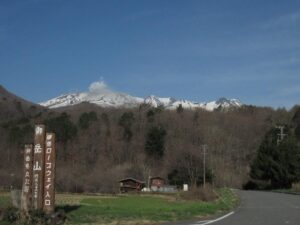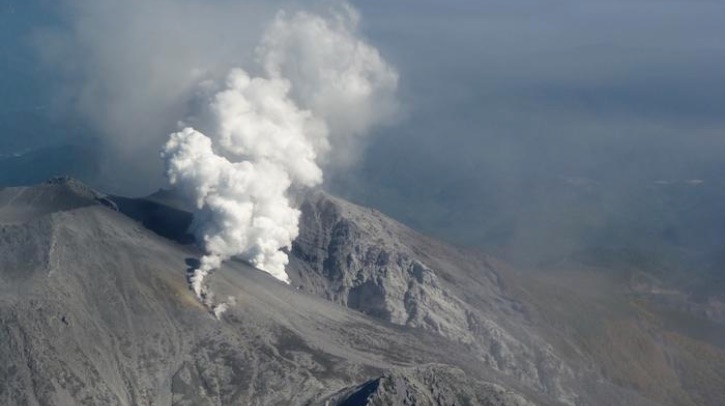A study, led by Professor Mike Kendall, head of the University of Oxford’s Department of Earth Sciences, has compared the earthquake signals during two eruptions of Ontake Volcano in Japan to investigate the use of a new monitoring technique for early warning of a volcanic eruption. The study, named ‘Changes in seismic anisotropy at Ontake volcano: a tale of two eruptions’, has been published in the journal Seismica.
The research team compared a seismic signal called shear-wave splitting from the two eruptions – one small, one explosive – and has been able to demonstrate that this parameter varies depending on the size of the eruption.
Shear-wave splitting
The researchers have investigated using shear-wave splitting to provide scientists, and communities, with an early warning of a dangerous eruption. The researchers say that while large movements of magma and rock inside a volcano cause seismic waves to be released, these signals can be challenging to untangle and that it was therefore this research was seeking a usable parameter that could not only predict if an eruption was set to occur, but also if the eruption was going to be particularly damaging.
Although researchers typically use the shear-wave splitting phenomenon to understand where magma and fluids are moving beneath a volcano, this team wanted to take this a step further and test whether the larger stress changes during an explosive eruption also caused a more significant change to the amount of shear-wave splitting.
“Seismic anisotropy – or the effect of rock composition and internal fractures on the speed of shear-waves oscillating at right angles to each other – is a well-documented phenomenon,” said Professor Kendall. “When we reflected on how anisotropy increases as the pressure inside a volcano builds, we were excited to explore if we could detect these changes, and if this could be a distinctive signal which could be applied to early warning systems.”
Observations at Ontake Volcano
The research team put this theory to the test by examining seismic signals during two eruptions of Ontake Volcano, on Honshū Island in Japan. The 2007 eruption was small and had much less of an impact on the surrounding community, whereas the 2014 eruption was larger, more explosive, and more deadly.
They discovered that during the smaller eruption, the amount of shear-wave splitting remained constant throughout, but during the larger eruption, the amount of splitting doubled just before Ontake exploded. The team believed that the larger stress change during the 2014 eruption increased the observed shear-wave splitting, indicating a useful relationship between the amount of splitting and the size of the eruption.

Nagoya University’s Professor Toshiko Terakawa, a co-author of the study, noted, “The focal mechanisms of volcano-tectonic earthquakes changed drastically before and after the 2014 eruption. Integrating data from shear-wave splitting and earthquake focal mechanisms could provide deeper insights into conditions required for an eruption to occur.”
Martha Savage, co-author and professor at Victoria University of Wellington, added, “The records around two eruptions on Ontake volcano in Japan have been able to show that the method can not only show changes before eruptions, but that they can potentially help to predict the size of an eruption. This work was an example of how cooperation among people from around the globe can address important societal problems.”
A valuable early warning system
 As the change in shear-wave splitting occurred before the eruption of Ontake began, scientists monitoring the volcano will be able to use this parameter as both an early warning system and an indicator of how damaging an eruption could be, offering a new way to protect local communities from the devastating impacts of a volcanic eruption.
As the change in shear-wave splitting occurred before the eruption of Ontake began, scientists monitoring the volcano will be able to use this parameter as both an early warning system and an indicator of how damaging an eruption could be, offering a new way to protect local communities from the devastating impacts of a volcanic eruption.
“We expect to see these effects at other volcanoes across the globe, not just at Ontake Volcano,” said co-author Dr Tom Kettlety, Oxford net zero research fellow in geological carbon storage, working within the earth sciences department at the University of Oxford. “As changes in volcanic stress occur prior to an eruption, we anticipate that we would see changes in shear-wave splitting. This could be a valuable tool for early warning of volcanic eruptions, especially for local communities.”
In related news, Prof. Myles Allen and his team of climate scientists at the University of Oxford Department of Physics recently published a study in Nature Communications, which demonstrated for the first time how weather forecasts can be used to show how greenhouse gas emissions affect extreme weather. Click here to read the full story.



